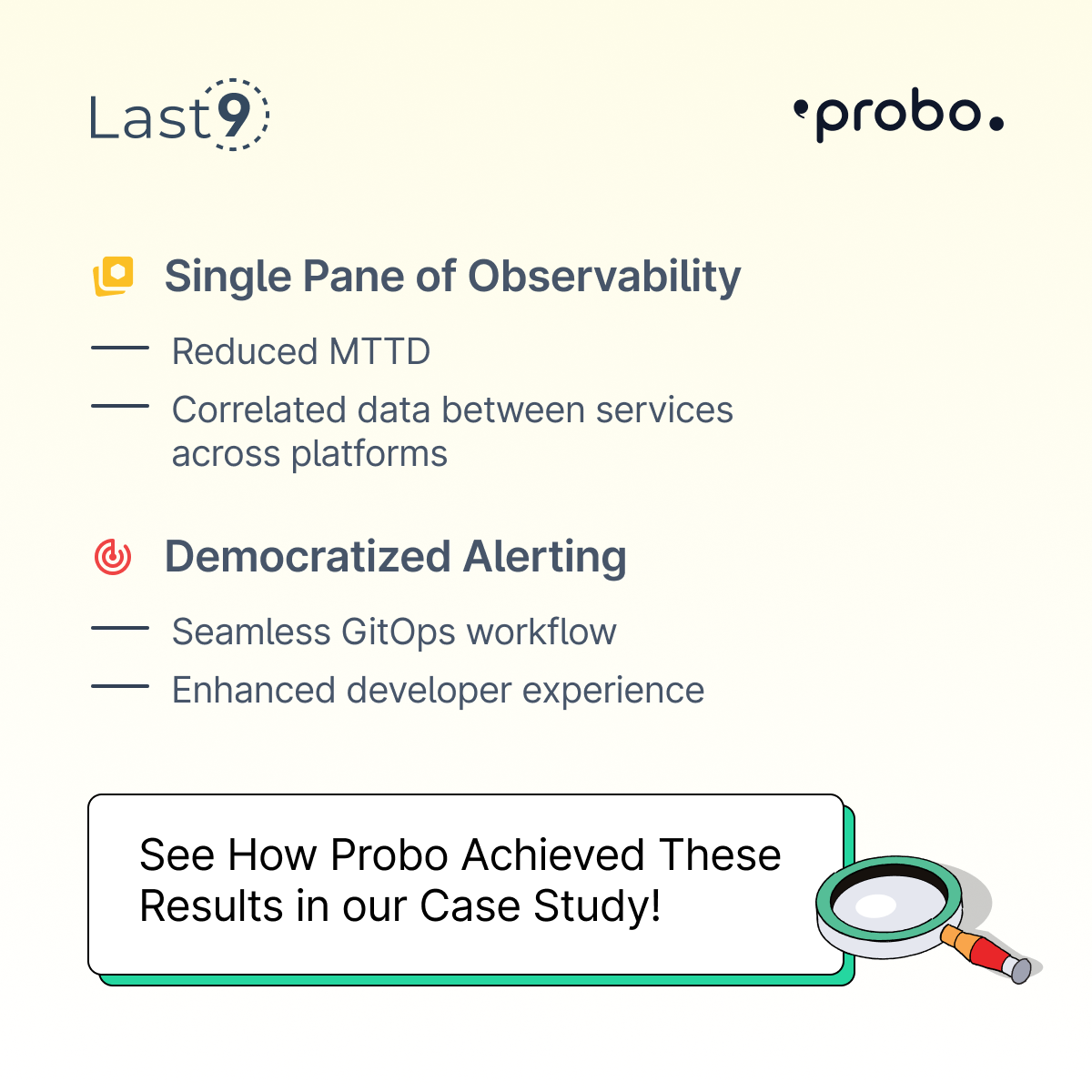Have you ever struggled with systems that fail to tell you what went wrong? The kind where you’re digging through logs at 2 AM while alerts keep piling up. In DevOps, clear visibility into your applications isn’t a luxury—it’s essential.
This is where instrumentation without code changes can help. It simplifies observability, reducing the manual effort needed to track down issues. If you haven’t explored it yet, you might be making troubleshooting harder than it needs to be.
What Is Zero Code Instrumentation?
Zero code instrumentation lets you collect telemetry data from your applications without manually adding code to your codebase. Unlike traditional methods where you'd need to modify your source code to track metrics, traces, and logs, zero code approaches inject this functionality automatically.
The core concept revolves around passive data collection. Your applications run as they normally would, but now they're being monitored at various levels—runtime, network, infrastructure, and even kernel—without changing a single line of their source code.
This approach drastically reduces the instrumentation burden on development teams while still providing deep visibility into application behavior.
How It Works
Zero code instrumentation typically uses one of these methods:
- Auto-instrumentation agents: Small programs that attach to your application at runtime
- Service mesh proxies: Network components that intercept and record traffic between services
- eBPF-based tools: Kernel-level technology that safely monitors system and application behavior
- Bytecode instrumentation: Techniques that modify compiled code during class loading
- Runtime attachments: Hooks that leverage language-specific profiling APIs
Auto-instrumentation Agents
These agents use various language-specific mechanisms to attach to your running applications.
Java applications, typically use the Java Agent mechanism, which allows code to be injected during class loading. For .NET, similar CLR profiling APIs exist, while Node.js agents often use module wrapping techniques.
When your application starts, the agent loads first and inserts telemetry collection code at key points in your application's flow—like HTTP requests/responses, database queries, and cache operations. This happens transparently without modifying your source code.
Service Mesh Instrumentation
Service meshes like Istio or Linkerd deploy sidecars alongside your services that intercept and process all network traffic. These proxies can automatically:
- Generate distributed traces across service boundaries
- Collect request/response metrics like latency, error rates, and throughput
- Monitor network behavior without application awareness
Since service meshes operate at the network level, they work regardless of programming language or framework.
eBPF-based Monitoring
Extended Berkeley Packet Filter (eBPF) technology allows safe execution of sandboxed programs in the Linux kernel. This opens up incredibly powerful observability options:
- Tracing system calls to understand application behavior
- Monitoring file access patterns without application changes
- Capturing network packet metadata for sophisticated traffic analysis
- Detecting security anomalies at the kernel level
Tools like Pixie and Cilium leverage eBPF to provide deep visibility with absolutely zero instrumentation needed in your application code.
These approaches insert instrumentation at key points in your application or infrastructure without requiring code changes.
Here's a quick comparison of instrumentation methods:
| Method | Code Changes | Deployment Complexity | Coverage |
|---|---|---|---|
| Manual instrumentation | Extensive | Low | Limited to instrumented code paths |
| Zero code instrumentation | None | Medium | Broad, automatic coverage |
| Hybrid approach | Minimal | Medium | Comprehensive with customization |
Zero Code Instrumentation & OpenTelemetry
OpenTelemetry has become the go-to standard for collecting and transmitting telemetry data. But how does zero code instrumentation fit in?
The OpenTelemetry Connection
OpenTelemetry offers a vendor-neutral way to collect, process, and export telemetry data. Zero code instrumentation tools often leverage OpenTelemetry under the hood—they're giving you the benefits of OpenTelemetry without making you implement it yourself.
With zero code solutions, you get:
- Instant OpenTelemetry compatibility: Your data is formatted to work with any OpenTelemetry-compliant backend
- Standardized context propagation: Trace data flows naturally between services
- Future-proofed instrumentation: As OpenTelemetry evolves, your tooling can update without codebase changes
OpenTelemetry Auto-Instrumentation
OpenTelemetry itself provides official auto-instrumentation libraries for many programming languages:
- Java: The Java agent can automatically instrument dozens of frameworks and libraries like Spring, Tomcat, JDBC drivers, and messaging systems
- Python: Using the
opentelemetry-bootstrappackage to automatically patch common libraries - Node.js: The
@opentelemetry/auto-instrumentations-nodepackage hooks into Express, Koa, MongoDB clients, and other common packages - .NET: The OpenTelemetry .NET Automatic Instrumentation tracks ASP.NET Core, Entity Framework, and more
These auto-instrumentation solutions follow the OpenTelemetry specification while requiring minimal configuration. They're particularly useful for:
- Brownfield applications: Add instrumentation to existing apps without code changes
- Microservice environments: Ensure consistent instrumentation across dozens or hundreds of services
- Third-party software: Monitor applications where you don't control the source code
OpenTelemetry Operator
For Kubernetes environments, the OpenTelemetry Operator takes zero code instrumentation to another level. It can:
- Inject auto-instrumentation into containers at deployment time
- Configure data collection and export automatically
- Manage the entire telemetry pipeline without manual setup
This creates a truly hands-off experience where simply deploying your application to a properly configured Kubernetes cluster automatically gives you full observability.
Real Benefits for DevOps Engineers
1. Faster Time to Visibility
You don't have time to manually instrument every service. With zero code options, you can deploy and get insights within minutes instead of weeks.
"We turned on auto-instrumentation on Tuesday and caught a memory leak in production by Wednesday," says Alex Chen, DevOps lead at a fintech startup. "That would've taken us a month to catch through our normal monitoring."
With zero code instrumentation, you can:
- Get immediate visibility into new services
- Roll out observability across your entire stack in days, not months
- Start getting actionable data without waiting for development cycles
2. Reduced Tech Debt
Every line of instrumentation code you add is code you'll need to maintain. Zero code approaches keep your codebase clean and focused on business logic.
The hidden costs of manual instrumentation include:
- Cross-cutting concerns scattered throughout your codebase
- Dependency version conflicts with instrumentation libraries
- Constant updates as observability standards evolve
- Instrumentation bugs that might affect your actual application
By moving instrumentation outside your codebase, you separate operational concerns from business logic—a core DevOps principle.
3. Consistent Telemetry
Manual instrumentation leads to inconsistent data collection as different teams implement things differently. Zero code tools apply consistent instrumentation across your entire stack.
This consistency creates multiple advantages:
- Uniform naming conventions for metrics and traces
- Standardized attribute tagging across services
- Consistent context propagation between system components
- Reliable correlation between different telemetry types (metrics, logs, traces)
When every service produces comparable telemetry, your ability to perform cross-service analysis dramatically improves.
4. Cost Efficiency
You might think, "Sounds expensive." But consider:
- Less engineer time spent writing and maintaining instrumentation code
- Fewer outages and faster resolution times
- Better capacity planning through improved visibility
Based on industry benchmarks, organizations typically:
- Reduce MTTR (Mean Time To Resolution) by 30-50%
- Decrease unnecessary infrastructure spending by 15-25%
- Lower developer time spent on instrumentation by 70-90%
5. Better Coverage
Manual instrumentation naturally focuses on the "happy paths" and known problem areas. Zero code approaches instruments comprehensively, including:
- Error paths that developers might not think to instrument
- Third-party libraries and dependencies
- System-level interactions not visible from application code
- Background operations and asynchronous flows
This comprehensive coverage often reveals issues in areas that would otherwise remain blind spots.

Getting Started with Zero Code Instrumentation
Here's how to begin:
Step 1: Choose Your Tool
Several excellent options exist:
- For Kubernetes environments: Check out OpenTelemetry Operator
- For Java applications: OpenTelemetry Java auto-instrumentation
- For full-stack visibility: Last9, Pixie, or Dynatrace
Step 2: Start Small
Pick a non-critical service and deploy your chosen zero-code solution. Most tools can be deployed as a sidecar container or agent.
Step 3: Connect to Your Observability Platform
Direct the collected data to your existing monitoring tools. Most zero-code solutions can send data to Prometheus, Jaeger, Last9, or cloud observability platforms.
Step 4: Expand Coverage
Once you've seen the value, roll out to more services. Most teams start with their most critical user-facing applications.
When Zero Code Isn't Enough
Zero code instrumentation isn't magic. You'll still want to add custom instrumentation for:
- Business metrics: Zero code can't track domain-specific KPIs
- Custom transactions: Some complex business flows need manual context
- Legacy applications: Older tech stacks might need specialized approaches
Business Metrics Tracking
While zero code instrumentation excels at technical metrics, it can't inherently understand your business domain. You'll want custom instrumentation for metrics like:
- Number of completed purchases
- Subscription conversion rates
- User engagement with specific features
- Financial transaction volumes
- Business-specific error categories
These metrics require context that only your application code can provide.
Complex Transaction Flows
For particularly complex or business-critical transactions, you might need additional context:
- Custom span attributes to record business-specific information
- Manual baggage propagation for special correlation needs
- Additional context for cross-request transactions
- Custom event markers for business process steps
Hybrid Approach Strategy
The smart move? Use zero code as your baseline, then add targeted manual instrumentation only where it adds unique value.
Many teams follow a "90/10" approach:
- 90% of observability comes from zero code instrumentation
- 10% comes from strategic, high-value manual instrumentation
This hybrid approach gives you the best of both worlds—comprehensive coverage with minimal effort, plus deep insights where it matters most.
Practical Tips from the Trenches
- Watch your data volume: Auto-instrumentation can generate tons of data. Set up sampling to manage costs.
- Keep security in mind: Some zero code tools need elevated permissions. Review security implications before deployment.
- Have an exit strategy: If you need to switch tools, ensure your data can be exported easily.
Whether you're scaling OpenTelemetry or just trying to keep things efficient, this puts you back in control.
Talk to us today!
Wrapping Up
Zero code instrumentation isn't just a trend—it's becoming the default way to handle observability. As systems grow more complex, manual instrumentation simply can't scale.
The era of battling production issues with limited visibility is over. Zero code instrumentation gives you the insights you need without the overhead.
FAQs
Is zero code instrumentation actually "zero code"?
While it's called "zero code," it might be more accurate to say "zero application code changes." You'll still need to:
- Configure the instrumentation solution
- Deploy agents or sidecars
- Set up your telemetry backend
However, you won't need to modify your actual application source code.
Does zero code instrumentation affect application performance?
Yes, but often less than you might think. Modern solutions typically add 1-5% overhead to CPU and memory usage. This is generally lower than poorly implemented manual instrumentation, which can sometimes add 10% or more overhead.
Techniques like adaptive sampling can further reduce this impact in production environments.
What types of telemetry can zero code solutions collect?
Most zero code instrumentation solutions can collect:
- Traces: Distributed transaction flows across services
- Metrics: Performance measurements and operational data
- Logs: Contextual log data with trace correlation
- Profiles: CPU and memory usage patterns
The specific capabilities vary by tool, but comprehensive solutions cover all four telemetry types.
How does zero code instrumentation work with containerized applications?
Extremely well. For containerized environments, zero code instrumentation can be:
- Injected via sidecar containers
- Included in base images
- Added through admission controllers in Kubernetes
- Deployed as DaemonSets for node-level monitoring
Kubernetes-native tools like the OpenTelemetry Operator make deployment particularly straightforward.
Can I use zero code instrumentation with serverless functions?
Yes, though with some limitations. For serverless environments:
- AWS Lambda, Azure Functions, and GCP Cloud Functions all support various auto-instrumentation options
- Cold start impacts may be more noticeable due to the short-lived nature of functions
- Some tools offer specialized wrappers for serverless deployments
The observability benefit typically outweighs the minor performance impact.
How does zero code instrumentation handle sensitive data?
Most solutions provide configuration options to:
- Redact sensitive fields like passwords, tokens, or PII
- Filter specific paths or endpoints
- Apply custom scrubbing rules
- Control sampling rates for specific operations
Always review and configure data handling policies before deploying to production.
Which programming languages are best supported by zero code tools?
Generally, JVM languages (Java, Kotlin, Scala), JavaScript/TypeScript, Python, Go, .NET languages, Ruby, and PHP have the strongest zero code support. Languages with dynamic runtime capabilities tend to be easier to instrument without code changes.
Compiled languages without runtime reflection capabilities (like C/C++) typically have more limited zero code options.
Can I switch between different zero-code instrumentation tools?
If your tools support OpenTelemetry, switching becomes much easier. The standardized data format means you can often change collection mechanisms without changing how you analyze the data.
When evaluating tools, prioritize those with OpenTelemetry compatibility to maintain flexibility.
How do I debug issues with zero code instrumentation?
Most solutions provide:
- Detailed debug logs for the instrumentation itself
- Health metrics about the collection process
- Validation tools to verify proper operation
- Community support channels for troubleshooting
When you encounter issues, start by enabling debug logging for the instrumentation components themselves.



